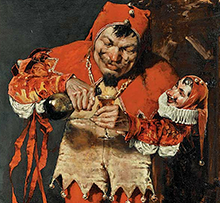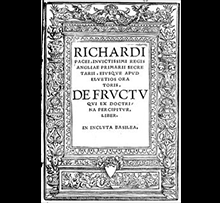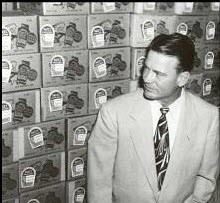Richard Pace I
Paper presented at the 1986 Pace Society Reunion in San Antonio, Texas by Mrs. L. S. Terrell (Eleanor Pace Terrell) – Printed in Pace Society of America Bulletin #77, September 1986, page 10-13

The year and the ship in which Richard and his wife Isabella came to Virginia have not been determined in spite of the efforts of many researchers. Nor were they among the “First Supply” sent over to add to the colony, for no women were in either group. Two women, a Mrs. Forrest and her maid, Ann Borros, were in the “Second Supply”. The “Third Supply” of nine ships, carrying 500 people sailed from England in August 1609. They may have been in that group. [1]
Recorded in “The Marriage Registers of St. Dunstan’s, Stephney, County of Middlesex”, page 70, is the following: “Richard Pace of Wappings married Isabell Smyth October 5, 1608.” His occupation was given as carpenter. [2]
Over a thousand years ago a small wooden church was on this site. About the year 952 Dunstan, Bishop of London and hence Lord of the Manor of Stephney, replaced it with a new stone church dedicated to all the saints. When, in 1029, Dunstan was canonized the title was changed to St. Dunstan and All Saints and it has been the parish church of Stephney ever since. [3]
We know they were Protestants or they would not have been allowed to settle in Virginia and we know that they came before April 16116. A later land grant describes them each as “Ancient Planters”. They were certainly shareholders in the London (Virginia) Company whose second Charter on May 23, 1609, “nominated as Planters those that go there (to Virginia) in person to dwell, and Adventurers who adventure their money and not go in person. And both do make the members of one Companie”. This was a joint stock corporation in whose hoped-for profits all members were to share after seven years. [4]

In an era when married women did not ordinarily own land in their own right, it has seemed strange that she would be granted land as an individual. The answer has been found in one of the petitions of the First Assembly (of Burgesses) in 1619. This reads: “It is preyed that it be plainly expressed that there be shares for wives because that in a new plantation it is not known whether man or woman be the most necessary”. [5]
Meanwhile the “Headright” system had been worked out. A planter could be granted 50 acres for every person whose passage to Virginia he paid. Richard brought over six people, in the Marmaduke, reaching Virginia in August 1621.
Richard by the end of 1621 had cleared and planted 200 acres. It is thought his house was up on the bluff and that it was a framed wooden house. They knew how to split logs into boards. Almost the first “Commodity” sent back to England was clapboards. Log cabins were unknown until later when Swedish settlers taught men how to build them. Richard names his place “Paces Paines” after himself; it is thought that “Paines” is an old English term for acres or fields.
The patents prior to 1624 are not available but Richard’s 400 acres and Isabella’s 200 acres were re-patented in 1628.
Richard had only a little time to enjoy his plantation for the great Indian massacre took place on March 22, 1622. He was a kind man for his Indian boy, Chanco, whom he had “used as a son”, [6] would not have warned him of the impending massacre. He also had qualities of leadership for he promptly placed Paces Paines in a state of defense and then rowed the three miles across the river to Jamestowne in time to give the alarm. But for this prompt and courageous action the entire colony might have been wiped out. Of the four thousand scattered over the countryside, three hundred and forty-seven died that morning. [7]
Richard Pace did not return to Pace Paines for between October 22 and January 1623 he petitioned the Council and G1overnor Wyatt to be allowed to return to his plantation and to fortify and strengthen the place “with a good company of men”. [8] The said petition was granted.
He died between February 16, 1623 and May 9, 162 for at the later date Isabella testified as “Mistress Perry” at a witchcraft trial. Though he lived a short life, he left his mark on history and we Paces think he founded one of the great families of America. [9]
Footnotes:
1. Pace Bulletin #3, Mrs. Mehrkens.
2. Society of Genealogist, 39 Harrington Gardens, London, S.W. 7 England, “Reports from London 1965”.
3. Leaflet “to tell you about…the Parish Church of St. Dunstans and All Saints, Stepney…a Church of over 1,000 years of history”.
4. Pace Bulletin #3, Mrs. Mehrkens.
5. Pace Bulletin #3, Mrs. Mehrkens.
6. Records of the Virginia Company – Vol. 2, p. 555.
7. Miss Annie Jones, History of Pace Families, p. 35.
8. Adventures of Purse of Person, p. 258.
9. Pace Bulletin #3 and Miss Annie Jones’ Pace History.


